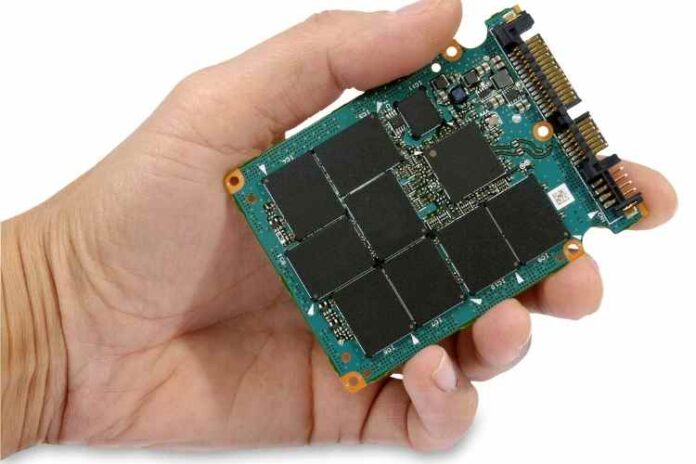SSDs are solid-state storage devices that store data permanently utilizing integrated circuit assemblies, most often flash memory. SSDs are much faster than mechanical hard drives and are used as secondary storage in a computer’s storage hierarchy. Solid-state drives (SSDs) are a type of computer storage device that is relatively new. Upgrade to an SSD is one of the most efficient ways to speed up your computer. In this blog we are going to tell you How To Recover Data From a Failed Or Dead SSD, so read this blog carefully to get the complete information. SSDs were first used in high-performance technological disciplines and enthusiast PCs, where the drives’ extremely quick access times and throughput justified the higher cost. However, with the introduction of low-cost mainstream laptops and PCs, they have become an acceptable alternative, if not the default one.
No matter how much money you spend on the assembling of a high-end computer or laptop, the SSC is by far the best component to enhance the speed of your computer system. When compared to other hardware components that can carry 20-30 Gigabytes per second, even a 600 MB SATA SSD is slow. As a result, switching to a faster NVMe SSD is arguably the best investment you can make when buying a new computer and a fantastic method to speed up your PC or Mac.
About SSD Failure
SSD problems, however, might be difficult to detect. When SSDs are going to shut down entirely, they don’t create audible noises like whirring, clicking, or buzzing. SSDs may operate in total silence until they fail. Data from a failed Solid-State Drive is difficult to recover (SSD). Furthermore, data recovery from a damaged SSD is dependent on the cause of the failure. Malware or virus infection, improper drive usage, unsafe drive removal, system crash (BSODs), abrupt or force shutdown, damaged system files, and firmware error are all possible signs of a broken block on an SSD.
Is it really possible to recover crucial data from a failed SSD?
Many of the techniques outlined above for recovering failing SSDs and analyzing poor disc performance allow SSD users to avoid data loss altogether. If an SSD starts working again after a firmware upgrade, its data is almost certainly fully accessible, and the drive itself may be safe to use. If the SSD, on the other hand, enters read-only mode, you may still use it to backup and retrieve vital data—but it’s not a good idea to rely on it again because it could corrupt and destroy data in the future.
In the worst-case situation, data might be permanently lost. When is this likely to happen? The drive may not be able to be resurrected if the physical or firmware damage is sufficiently severe. In other cases, a corrupted disc may be able to be turned back on with the appropriate method, but data may be lost.
Many SSDs use TRIM, an Advanced Technology Attachment (ATA) instruction that aids an operating system in determining which data blocks it can delete. This feature improves the performance and service life of an SSD by speeding up data writing, but it also makes data recovery more difficult in the case of an SSD failure.
Apart from these issues, data recovery from SSD storage may be accomplished with the correct tools. Many data recovery software packages have recovery wizards that search SSDs for lost files and allow MSPs to restore partitions or specific files. While some of the most successful programmes are free, many of the most effective applications are not—but they are a smart investment for MSPs wanting to recover their clients’ data from malfunctioning hard drives. Alternatively, there are a variety of operations that provide more extensive and specialised recuperation services. These companies hire tech professionals that decrypt SSDs and recover data using the most appropriate way for your SSD failure and drive manufacturer.
Steps to Recover Data from Failed SSD
Step 1: is to not attempt to format or repair your computer.
Formatting can be used to repair a logically failing SSD that has become RAW or inaccessible. However, this might lead to irreversible data loss, which is beyond the scope of data recovery. As a result, even if Windows urges you to format a faulty SSD disc, it’s suggested that you never do so (refer to the screenshot). Also, do not use Windows or a third-party disc management programme to restore a logically failed SSD.
Assign a Drive Letter in Step 2
If the SSD volume isn’t visible in File Explorer, use the Disk Management tool to assign a drive letter. The procedure is as follows:
1. Connect the SSD drive to a PC running Windows. Use a SATA connection or a SATA-to-USB adapter.
2. Start the Disk Management programme.
3. Choose ‘Change Drive Letter and Paths…’ from the context menu when right-clicking on the SSD volume.
4. First click ‘Add’ and after that click ‘OK’, ‘OK.’
5. After setting a drive letter, you may see the following prompt; select ‘Cancel.’
Step 3 is to use Stellar Data Recovery Software to recover data from a failed SSD.
1. Install the Stellar Data Recovery Standard programme on your computer.
2. Start the programme, choose ‘All Data,’ and then click ‘Next.’
3. Under the ‘Connected Drives’ list, choose the SSD disc volume.
4. Click ‘Scan’ after turning on the ‘Deep Scan’ toggle at the bottom left. Depending on the SSD interface, quality, and storage amount, this might take anything from a few minutes to many hours.
5. After the scan, click the save scan option on the menu to store the scan information. This function allows you to restart data recovery at a later time, saving you time.
6. Before saving any recovered document, photo, video, or audio file, click on it to receive a preview. Also, utilize the search box to swiftly discover important files for recovery.
7. Then click ‘Recover’ after selecting the files you wish to save.
8. Select a save place on your internal or external hard drive by clicking the ‘Browse’ button, then click the ‘Start Saving’ button.
After you’ve retrieved all of your data from the failing SSD, format it to repair it and make it useful. Then, after taking a backup, transfer the restored data to avoid permanent data loss. Data retrieval from dead or corrupted SSD is not that tough, By following the right steps, you can get your lost data back easily.
Conclusion:
I hope, this blog is sufficient enough to provide the information about How to Recover Data from Failed SSD.






![MX Player Custom Codec [AC3, DTS, MLP, TrueHD, and more] MX Player Custom Codec](https://techmenza.com/wp-content/uploads/2021/10/MX-Player-Custom-Codec-100x70.jpg)


